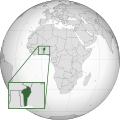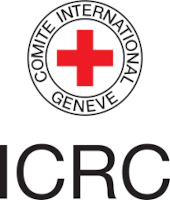Knowledge fuels change
For over a decade, Energypedia has shared free, reliable energy expertise with the world.
We’re now facing a serious funding gap.
Help keep this platform alive — your donation, big or small, truly matters!
Thank you for your support
Benin Energy Situation
Capital:
Porto Novo
Region:
Coordinates:
6.4667° N, 2.6000° E
Total Area (km²): It includes a country's total area, including areas under inland bodies of water and some coastal waterways.
XML error: Mismatched tag at line 6.
Population: It is based on the de facto definition of population, which counts all residents regardless of legal status or citizenship--except for refugees not permanently settled in the country of asylum, who are generally considered part of the population of their country of origin.
XML error: Mismatched tag at line 6. ()
Rural Population (% of total population): It refers to people living in rural areas as defined by national statistical offices. It is calculated as the difference between total population and urban population.
XML error: Mismatched tag at line 6. ()
GDP (current US$): It is the sum of gross value added by all resident producers in the economy plus any product taxes and minus any subsidies not included in the value of the products. It is calculated without making deductions for depreciation of fabricated assets or for depletion and degradation of natural resources.
XML error: Mismatched tag at line 6.2 ()
GDP Per Capita (current US$): It is gross domestic product divided by midyear population
XML error: Mismatched tag at line 6. ()
Access to Electricity (% of population): It is the percentage of population with access to electricity.
XML error: Mismatched tag at line 6.no data
Energy Imports Net (% of energy use): It is estimated as energy use less production, both measured in oil equivalents. A negative value indicates that the country is a net exporter. Energy use refers to use of primary energy before transformation to other end-use fuels, which is equal to indigenous production plus imports and stock changes, minus exports and fuels supplied to ships and aircraft engaged in international transport.
XML error: Mismatched tag at line 6.no data
Fossil Fuel Energy Consumption (% of total): It comprises coal, oil, petroleum, and natural gas products.
XML error: Mismatched tag at line 6.no data
Introduction
Benin is a least developed country in West Africa with a small southern coastline on the Bight of Benin where a majority of the population llives. Benin covers an area of approximately 110,000 km² (1/3 of the area of Germany), with a population of approximately 8.9 million (World Bank, 2010). Classified as a low-income country, Benin is ranked 134th out of 169 on the 2010 UNDP Human Development Index. About 75 % of the population live on less than $ 2 a day (World Bank, 2006). In 2010, 41 % of Benin’s population was living in urban areas, and the projections of the National Institute of Statistics and Economic Analysis predicted that by 2025 approximately 60 % of the population will live in cities, mainly located in the coastal areas.
Energy Situation
[Show/hide]
Benin's total energy consumption in 2009 was 3,475 ktoe (World Bank, 2009). The per capita energy consumption in the same year was 0.404 toe. This is about half of the average per capita energy consumption for Sub-Sahara African countries, and less than a quarter of the world average (World Bank, 2009).
Like for most countries in Sub-Saharan Africa, Benin's energy sector is largely dominated by the use of biomass-based energy sources (59.4%) (Tableau de Bord de l'Energie au Bénin, 2005), followed by petroleum products (38.4%) and, to a lesser degree, electricity (2.2%).
The country solely depends on imports to satisfy its petroleum product demand, while 85% of its electricity consumption is answered by imports from Ghana, Cote d’Ivoire and Nigeria. Households account for 48% of the country’s total electricity consumption followed by the institutional sector and the industrial sector, which account for 32% and 24% respectively. Although in the five past years the final total energy consumption has perceptibly increased, the structure of final energy consumption has not changed. In 2010 the national electrification rate was at 27% with 4% in rural areas and about 54% in urban areas. The length of domestic tranmission and distribution lines is 5620 km and the length of transnational lines is 618 km.
The country is 100% dependent on petroleum imports, making it vulnerable to dollar exchange rates and fluctuations in oil prices. Moreover, fluctuations in fossil fuel prices compromise Benin’s domestic capacity to develop its energy services.
While Benin has a large hydroelectricity potential only one major hydroelectric site currently functions. Development of over 80 pre-identified sites using micro-hydro applications would help Benin increase its energy resilience.
The country has a huge and untapped renewable energy potential. Although with low levels of domestic capital formation and little internal capacity (engineers, technicians etc.) this potential is not being realised. The absence of hazard or siting maps for equipment installation means that Benin’s existing energy infrastructure remains extremely vulnerable to anticipated climate change impacts. While Benin’s National Adaptation Plan of Action notes the necessity of an emergency response plan to deal with the impacts of metrological extreme events, this plan has yet to be developed.
Major Challenges in Energy Sector
The energy sector is under constant pressure from different challenges.
However, main issues in the energy sector are as follows:
- Non-sustainable use of biomass: Around 80% of the population depends on the use of biomass for cooking needs. While consumption has increased between 1997 and 2002 at an annual rate of 5 %, forest areas were reduced by 22.8 % (i.e. 1.2 million hectares) from 1990 to 2010 (FAO). Since 2004, there is an overall shortfall in the supply of fuel wood energy at the national level, with wide variation at the regional level. This results in a massive degradation of forest resources.
- Low access rate to electricity in rural areas: while the national power board SBEE has increased the electrification rate in urban areas from 20 to 52.4 % since 1990, only 2 % of rural areas are connected to the grid. At the same time, around 60% of the population lives in rural areas.
- Electricity generation constraints Since early 2007,Benin has been going through an energy crisis due to curtailed supply from its neighbors Ghana and Cote d’Ivoire. Lack of operational capacity at the distribution utility SBEE did reinforce the crisis. Following a brief recovery at the end of 2007 after the rainy season, in mid-2008 Benin was again subject to energy shortages. However, the long term stability in the target region is assured. The reasons are ongoing investments in transmission lines interconnecting North and South Benin, Benin and Togo as well as Benin and Nigeria and the intended extension of generation capacities conducted by Compagnie Electrique du Bénin (CEB).
Key Problems Hampering Access to Electricity
[Show/hide]
Although the Government of Benin clearly defined a strategy for rural electrification, the objective of achieving a rural electrification rate of 40% in 2015 is highly ambitious due to the following reasons:
SBEE is far from being capable of achieving these goals due to insufficient financial capacities: SBEE’s indebtedness is 9 times as high as its turnover and financial losses are increasing continuously, since the supply costs per kWh exceed the retail price; not only but mainly in areas provided by diesel generators.
In addition to the financial bottleneck, one important reason is the ack of knowledge about low-cost alternatives to the business as usual scenario of grid extension. This scenario was designed originally for urban areas based on high technical “EDF” standards that are inappropriate for rural areas.
Furthermore, for political reasons, SBEE focuses on the extension of the grid to previously non-electrified regions, instead of increasing the number of connected households in proximity to the grid.
Although some responsibilities for rural electrification have been shifted to ABERME, the agency proved to be incapable of driving the electrification process. Lack of capacity is the main reason, especially the lack of engineering expertise.
Institutional Set-up in the Energy Sector
[Show/hide]
There are four main governmental actors in the electricity sector:
- Communaute Electrique du Benin(CEB): CEB is a bipartite utility supplying electricity to national distribution utilities in Benin and Togo (around 85% of generation capacity).
- Societe Beninoise d’Energie Electrique(SBEE): Responsible for electricity distribution and local generation through diesel generators (around 13% of generation capacity).
- Agence Beninoise d’Electrification Rurale et de Maitrise d’Energie(ABERME): responsible for rural energy supply (established in 2004).
- Ministere de l'Energie, des Recherches Pétrolières et Minières, de l'Eau et du Développement des Energies Renouvelables (MERPMEDER): responsible for the national energy policy and coordination of the activities in the energy sector.
Main actors from the private sector are for solar products and installations:
- ECOSOLARIS AFRIQUE SARL is a canadian enterprise specialised dans l’énergie solaire présente au Bénin depuis Février 2013. Elle est une succursale des Entreprises Ecosolaris inc, leader canadien de l’énergie solaire, distributeur depuis plusieurs années des produits de qualité Nord-Américains, Européens, Australiens et Asiatiques qui a su développer une expertise sur le terrain dans les installations hors réseau pour les systèmes à la fois photovoltaïque et thermique. Ecosolaris Afrique vend des produits de Barefoot Power LTD et Flexyway solar.
- BONERGIE BENIN SARL was founded in 2012 with support of the German social company BONERGIE. Bonergie is selling Sun Tranfer products (see also http://www.bonergie.com/english/produkte.html).
- Objectifs SARL which is selling Sun King products of the US company greenlight planet
Policy Framework, Laws and Regulations
[Show/hide]
In order to tackle the challenges in the energy sector the government of Benin has formulated the Policy and Strategy Document for the Development of the Electricity Sector that provides the long term vision and the strategy of the country by 2025.
The overall energy strategy can be summarised as follows:
- strengthening the legal and institutional framework;
- ensuring reliable electricity supply to support economic activities and achieve the national energy security and an efficient energy delivery system with an optimal energy resource mix;
- increasing energy access to population through new power generation plants, regional interconnection and rural electrification;
- promoting private investments in the power sector by creating the enabling market environment for private sector participation
- promoting energy efficiency in all sector.
Regarding rural electrification, it aims at providing 150 villages p.a. with access to electricity in order to achieve a rural electrification rate of 30–40 % by 2015. Furthermore, promoting the dissemination of improved stoves and other renewable domestic energy sources are additional objectives of the strategy to tackle the energy challenges in rural areas.
In the run of the energy sector reform, which gained considerable momentum in recent months (mainly due to growing World Bank interest in the sector), the establishment of a Rural Electrification Fund is being discussed. It shall incorporate a concession model with minimum subsidy bidding. The Fund is intended to bundle investments of donor agencies designated to rural electrification. Rural regions covered by the SBEE grid will also be concessioned(15 concessions in total). However, basic features of this instrument are yet unclear such as regulation, payment authorisation and tariffing. Experiences in Senegal and Mali, furthermore, expose a very limited interest of private enterprises to compete for such funds. Concerning the national and even regional private sector, the mobilisation of financial resources is less an impediment than lacking capacities to implement privately run electricity concessions in Benin.
The reform process goes along with a shift in responsibilities for rural electrification from SBEE to ABERME. It is, furthermore, planned to split up SBEE into an asset management and a distribution management company.
Internationally funded projects
The French Agency for Development (AFD) is preparing a project to support the restructuration and extension of the grid in the region Abomey-Calavi and the Atlantic Department. The project is cofounded by the EU and the European Investment Bank.
The African Development Bank (AfDB) finances a project to restructure and reinforce power generation and electricity distribution of the utility SBEE in Cotonou, Porto Novo, Parakou, Bohicon, and Lokossa
The World Bank is implementing the following projects:
The “Increased Access to Modern Energy” supported by several banks including the KfW is intended to increase the number of customers connected to the grid. The project is comprised of four components: (A) Electrical Network Upgrading, (B) Electrification and Modern Energy Services, (C) Sustainable Energy Services and (D) Project Preparation.
Component A supports the upgrading of the existing transmission and distribution grid. The planned activities include the construction of two transmission lines, rehabilitation of distribution networks in key urban centers, installation of prepaid meters and measures to enhance lighting and appliance efficiency to help reduce peak load and energy consumption.
Component B supports the provision of modern energy services in rural areas. Component C supports the provision of technical assistance to improve the financial autonomy and performance of key sector institutions and enhance the capacity to better plan and regulate Benin's energy sector. Component D aims at supporting planning of new projects such as the hydropower project in Adjarala.
The World Bank also supports the construction of the barrage for the hydropower plant in Adjarala. The project is co-financed by AfDB.
In addition the World Bank with funding from KfW and European Investment Bank executes a project to strengthen power transmission between Togo and Benin.
BMZ finances activities of GIZ to strengthen the capacity of the West African Power Pool. In addition BMZ provides funds for KfW to rehabilitate the hydropower plant in Nangbeto. KfW is also financing the transmission line between Sakété and Porto Novo.
On behalf of six donors, the Energising Development Program (EnDev) executed by GIZ is supporting grid extension, grid densification, picoPV system and dissemination of improved stoves
The European Union is supporting the « Centre d'Information et de Contrôle (CIC) » of the West African Power Pool.
Further Information
[Show/hide]
References
[Show/hide]





















